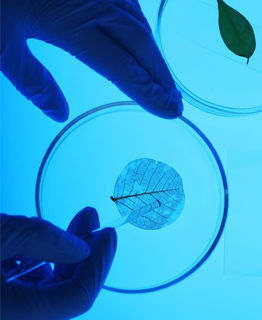
The development of leaf diseases in plants can exert a substantial influence on both crop productivity and the general well-being of the plant. The timely identification and precise categorization of these diseases are essential in order to facilitate prompt interventions and forestall any potential escalation. The present study introduces a deep learning methodology for the purpose of segmenting and classifying various types of leaf diseases. The model under consideration employs advanced convolutional neural networks (CNNs) to automatically partition and categorize leaf diseases on the basis of input images. The segmentation module is responsible for detecting and separating the regions of interest, which correspond to the areas of the leaf that are affected by a particular disease. On the other hand, the classification module is designed to assign the segmented regions to specific disease categories. The model has undergone training on a vast dataset of categorized leaf images that depict diverse ailments. This process has enabled the model to acquire knowledge of complex patterns and characteristics that are linked to each disease. The efficacy of the suggested methodology in precisely segmenting and categorizing diverse leaf diseases has been demonstrated through research results that are exceeding conventional image processing methods.